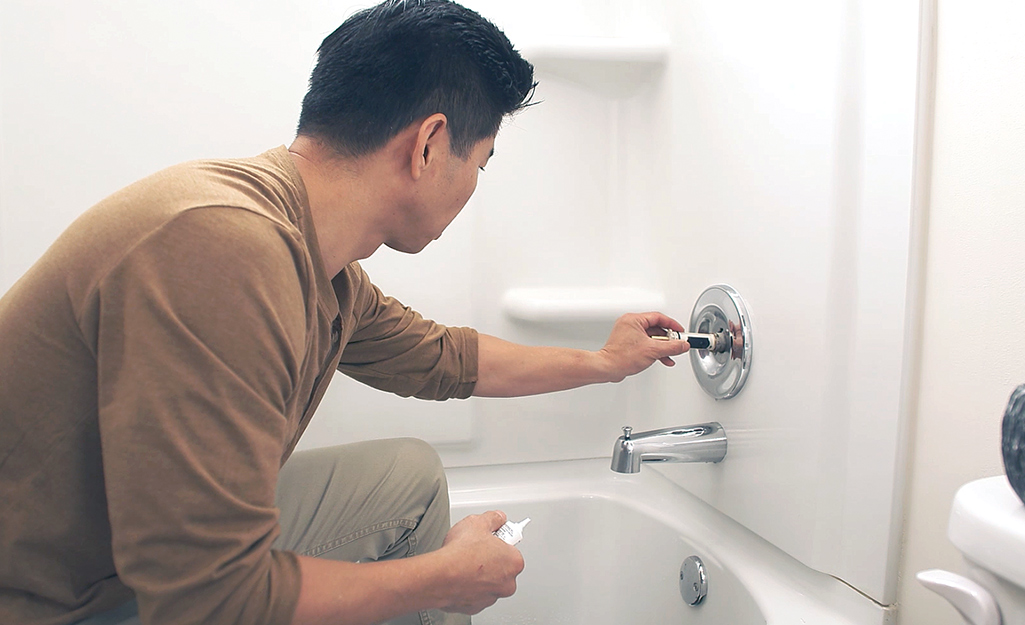The article author is making a few great annotation on What Causes Leaky Faucets & How To Fix Them in general in this content followed below.

Trickling taps might feel like a minor aggravation, yet their impact surpasses simply the annoyance of the audio. From drainage to incurring unneeded financial expenses and health and wellness threats, overlooking a leaking tap can result in numerous effects. In this write-up, we'll look into why it's important to address this common household problem without delay and effectively.
Wastefulness of Water
Ecological Influence
Leaking faucets contribute considerably to water wastefulness. According to the Epa (EPA), a single faucet dripping at one drip per secondly can lose more than 3,000 gallons of water each year. This not just strains water sources but additionally impacts environments and wildlife based on them.
Financial Costs
Boosted Water Expenses
Past the ecological influence, dripping faucets can inflate water bills significantly. The gathered wastefulness gradually translates into higher energy expenditures, which could have been avoided with timely fixings.
Potential Residential Property Damage
Furthermore, long term leaking can result in harm to fixtures and surfaces surrounding the tap. Water buildup can create staining, corrosion, and also architectural concerns if left ignored, leading to additional fixing costs.
Health Worries
Mold And Mildew and Mold Development
The consistent visibility of dampness from a trickling faucet develops an optimal setting for mold and mildew development. These fungis not only compromise indoor air top quality yet additionally posture health risks, especially for individuals with respiratory problems or allergies.
Waterborne Diseases
Stagnant water in trickling faucets can come to be a breeding ground for germs and other pathogens, boosting the danger of waterborne illness. Pollutants such as Legionella microorganisms flourish in stationary water, possibly leading to severe health problems when consumed or inhaled.
Do it yourself vs. Professional Fixing
Benefits and drawbacks of DIY Repair
While some might attempt to repair a trickling faucet themselves, DIY fixings include their very own set of challenges. Without appropriate knowledge and tools, DIY attempts can aggravate the concern or bring about incomplete repair work, lengthening the problem.
Advantages of Working With a Professional Plumber
Employing a professional plumber makes certain that the underlying cause of the dripping faucet is addressed effectively. Plumbing professionals possess the experience and devices to identify and fix faucet issues efficiently, saving time and minimizing the threat of additional damage.
Step-by-Step Overview to Taking Care Of a Dripping Faucet
Devices Needed
Before attempting to deal with a leaking tap, gather the necessary tools, including an adjustable wrench, screwdrivers, substitute parts (such as washers or cartridges), and plumber's tape.
Typical Faucet Issues and Their Solutions
Identify the kind of tap and the certain problem triggering the drip. Common troubles include worn-out washers, rusty shutoff seats, or defective O-rings. Describe producer directions or on the internet tutorials for step-by-step support on fixings.
Safety nets
Normal Upkeep Tips
To stop trickling taps, carry out routine upkeep such as cleaning up aerators, checking for leaks, and changing worn-out components quickly. In addition, take into consideration setting up water-saving gadgets or updating to much more effective fixtures.
Relevance of Prompt Repair Works
Dealing with dripping taps as quickly as they're discovered avoids more water waste and prospective damages, ultimately conserving both water and cash in the long run.
Impact on Residential Property Worth
Understanding of Well-Maintained Building
Preserving a home in good condition, consisting of resolving upkeep issues like leaking taps, boosts its perceived worth and charm among potential buyers or lessees.
Impact on Resale Worth
Features with well-kept plumbing fixtures, including faucets, command greater resale worths in the real estate market. Addressing dripping taps can add to a favorable impact during residential or commercial property evaluations and arrangements.
Environmental Duty
Individual Payment to Preservation
Taking obligation for fixing trickling taps aligns with more comprehensive initiatives toward water conservation and ecological sustainability. Every person's activities jointly make a significant influence on preserving precious resources.
Sustainable Living Practices
By prioritizing timely repair work and embracing water-saving routines, individuals contribute to sustainable living techniques that benefit both existing and future generations.
Final thought
Attending to a dripping faucet surpasses simple comfort; it's an essential action toward saving water, minimizing financial prices, and guarding wellness and residential property. Whether through do it yourself repair work or specialist support, acting to take care of trickling faucets is a small yet impactful way to promote liable stewardship of sources and add to a healthier, extra lasting future.
How to Fix a Leaky Faucet: Step-by-Step Repair Guide
A leaky faucet may seem like a simple annoyance, but if it's not fixed promptly, that leak could cost hundreds to potentially thousands. From water damage to mold, mildew, and high water bills, even a tiny leak can be catastrophic if left unattended. Damage like this can even affect the overall value of your home, so it's important to take the right approach for leaky faucet repair. You may need the help of a plumber in some cases, but we've got a few tips you can try on how to fix a leaky faucet before calling the pros.
Four Faucet Types
When you're learning how to fix a leaky faucet, the first step is knowing what kind of faucet you're working with! There are four common types.
Cartridge Faucets
Cartridge faucets come in one- or two-handled varieties. In one-handled cartridge faucets, hot and cold water combines in a single cartridge. In the two-handled versions, hot and cold water are controlled separately and mixed in the faucet.
Ball Faucets
Ball faucets have a single lever you push up and down to adjust the pressure and rotate to change the temperature. A slotted metal ball controls the amount of water allowed into the spout.
Compression Washer Faucets
They're the oldest type of faucet, but they're still used in many homes — especially older ones. Compression faucets have two separate handles that, when turned, raise or lower the washer that seals a water valve. This valve stops water from flowing through the faucet when it is turned off.
Disc Faucets
Disc faucets rarely need to be repaired due to their maintenance-free design. The water flow is controlled by two discs — the upper one raises and lowers against a fixed lower disc, creating a watertight seal. If your disc faucet starts leaking, you may need to replace the seals or clean residue buildup from the inlets.
Fixing a Leaky Faucet
Step 1: Turn Off the Water
Whether you're learning how to fix a leaky bathtub faucet or how to fix a leaky kitchen faucet, always turn off the water supply to your working area when you're fixing a leak. The last thing you want is a flood added to your list of things to fix.
Look for the shutoff valves below your sink or around the tub and turn them clockwise to stop the water flow. If your faucet doesn't have shutoff valves, you may need to turn off the water for the whole house. Check to make sure it's off by turning the faucet on. If nothing comes out, you're ready to start the repair.
Step 2: Take Apart the Faucet
How you disassemble your faucet depends on the type of fixture you have. You can use a flathead screwdriver to remove the caps on top of the handle or handles for cartridge and compression faucets. Inside, you should see handle screws. Unscrew these with a screwdriver to remove the handle.
Disc- and ball-style faucets will typically have an inlet screw near the handle, and removing that will reveal the interior of the faucet.
Detach the Valve Stem
For cartridge- and compression-style faucets, you'll see the inner valve stem or cartridge once you remove the faucet handles. If you have a compression faucet, unscrew the brass valve stem. If you have a cartridge faucet, pull out the cartridge. If your cartridge has been in place for a while, it may require some tools or extra force to remove it due to mineral deposits.
Examine and Replace Parts
Once you've removed the parts, check them out to confirm what needs to be replaced. You may see corroded rubber washers, O-rings, stems, or cartridges. On a ball-style faucet, check the seats and springs for damage.
If you need to repair a leaky disc faucet, check the inlet and seals on the lower disc.
Once you determine what parts must be replaced, visit your local hardware store. Bring the damaged parts with you to ensure you can purchase the correct components to replace them.
Clean Valves and Faucet Cavity
If you've removed a stem or cartridge, you may notice mineral buildup in the faucet's threads. Use white vinegar to clean the valve seat by soaking it for a few minutes, then scrub it away with a soft toothbrush and rinse with warm water. You can also clean the interior of the faucet in the same way.
Reassemble the Faucet
Once your faucet is cleaned and the required parts have been replaced, it's time to reassemble it. Put the pieces back together and slowly turn the water supply back on. Doing this slowly is crucial because too much initial water pressure can damage the new hardware you've just installed.
https://homewarranty.firstam.com/blog/how-to-fix-leaky-faucet

I have been very intrigued by What Causes Leaky Faucets & How To Fix Them and I hope you enjoyed our article. Are you aware of someone else who is interested by the topic? Why not share it. I value reading our article about Water Dripping from Faucet: Why and How to Fix.
 Barret Oliver Then & Now!
Barret Oliver Then & Now! Michael Jordan Then & Now!
Michael Jordan Then & Now! Phoebe Cates Then & Now!
Phoebe Cates Then & Now! Pauley Perrette Then & Now!
Pauley Perrette Then & Now! Dolly Parton Then & Now!
Dolly Parton Then & Now!